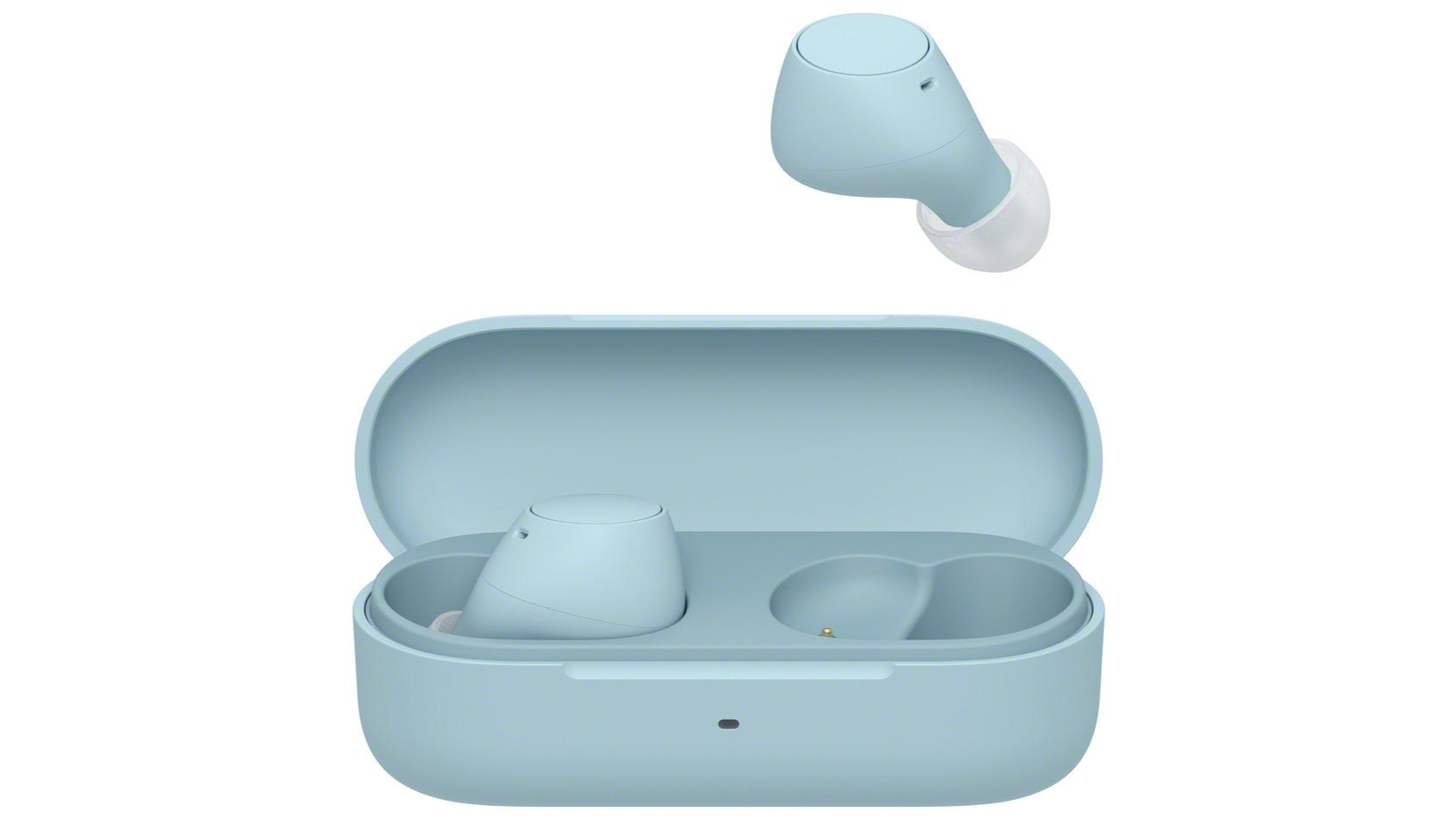In the ever-expanding world of true wireless stereo (TWS) earbuds, budget options have become increasingly competitive, offering features that were once reserved for premium models. Two standout contenders in the sub-₹5,000 category are the Sony WF-C510 and the boAt Nirvana Ivy TWS. Both promise solid audio performance, reliable connectivity, and long-lasting battery life, but they cater to slightly different user preferences and priorities.
Whether you’re a casual listener, a remote worker, or someone looking for a dependable pair of earbuds for daily use, this comparison will help you decide which of these two delivers the better value for your needs.
Design and Comfort
Sony’s WF-C510 earbuds sport a minimalist in-ear design with a matte finish and subtle branding. Available in vibrant colors like yellow, blue, black, and white, they offer a playful aesthetic without compromising on build quality. Each earbud weighs just 4.6 grams, making them extremely lightweight and comfortable for extended listening sessions. The case adds up to 35.6 grams, keeping the overall package portable and pocket-friendly.
boAt Nirvana Ivy, on the other hand, leans into a more conventional stem-style design. Available in white and black, the earbuds are slightly heavier but still ergonomic. The fit is secure, and the included ear tips come in multiple sizes to ensure comfort and noise isolation. While the design is less flashy than Sony’s, it feels sturdy and well-suited for everyday use.
Both earbuds are IP-rated for water resistance, with Sony offering IPX4 and boAt stepping up with IPX5. This makes the Nirvana Ivy slightly more resilient against sweat and splashes, ideal for workouts and outdoor use.
Audio Performance
Sony’s WF-C510 features 6mm dynamic drivers tuned for balanced sound. The earbuds support SBC and AAC codecs, delivering decent clarity across frequencies. Bass is present but not overpowering, mids are clean, and highs are crisp enough for podcasts and acoustic tracks. While they don’t offer active noise cancellation, the passive isolation is effective in moderately noisy environments.
boAt Nirvana Ivy ups the ante with 11mm dynamic drivers, offering a more bass-heavy sound signature. These earbuds are clearly tuned for Indian audiences who prefer punchy lows and energetic playback. Vocals remain clear, and the soundstage is wide enough for immersive listening. However, codec support is limited, and audiophiles may notice compression artifacts in high-resolution tracks.
If you prefer a more neutral and balanced sound, Sony takes the lead. But if you’re all about thumping bass and vibrant audio, boAt’s Nirvana Ivy delivers a more exciting experience.
Battery Life and Charging
Battery life is one of the most significant differentiators between these two models. Sony WF-C510 offers up to 11 hours of playback on a single charge, with the case providing an additional 11 hours, totaling 22 hours. This is impressive for such compact earbuds and ensures you won’t be reaching for the charger too often.
boAt Nirvana Ivy absolutely dominates in this category, boasting a staggering 100 hours of total playback time. While the earbuds themselves offer around 8 to 10 hours per charge, the massive charging case with a 600mAh battery extends usage for days. This makes the Ivy ideal for travel, long commutes, and users who hate frequent charging.
Sony uses USB Type-C for charging, and boAt follows suit, ensuring fast and convenient top-ups. However, boAt’s charging time is slightly quicker at 2.5 hours compared to Sony’s 3 hours.
For battery longevity and convenience, boAt Nirvana Ivy is the clear winner.
Connectivity and Controls
Both earbuds support Bluetooth 5.3, offering stable connections and low latency. Sony’s WF-C510 includes multipoint connectivity, allowing users to pair with two devices simultaneously. This is a huge plus for professionals who switch between phone and laptop throughout the day.
boAt Nirvana Ivy also supports dual pairing, although it lacks some of the advanced features found in Sony’s ecosystem. The earbuds connect quickly and maintain a stable link within a 10-meter range.
In terms of controls, Sony uses physical buttons that are responsive and easy to locate. They allow users to play/pause music, skip tracks, and answer calls. boAt opts for touch controls, which are more modern but can be prone to accidental activation. Both support voice assistants and offer call management features.
Sony’s inclusion of AAC codec and multipoint connectivity gives it an edge in versatility, while boAt’s touch controls and quick pairing cater to users who value convenience.
Call Quality and Microphone Performance
Sony WF-C510 includes dual microphones with decent noise suppression. Call quality is clear in quiet environments, and voices come through naturally. However, in noisy settings, background sounds can creep in, affecting clarity.
boAt Nirvana Ivy features quad microphones with ENx technology, designed to enhance voice pickup and reduce ambient noise. In practice, this results in better call quality, especially outdoors or in crowded areas. The Ivy also includes wind noise reduction, making it more suitable for on-the-go communication.
If call quality is a priority, boAt Nirvana Ivy offers a more reliable and polished experience.
Software and Extra Features
Sony’s earbuds integrate with the Sony Headphones Connect app, allowing users to customize sound profiles, update firmware, and access features like find-my-earbuds. The app adds value and personalization to the WF-C510 experience.
boAt Nirvana Ivy does not currently offer app support, which limits customization. However, it includes in-ear detection, auto-pairing, and low-latency mode for gaming, which are useful additions for casual users.
Sony’s software ecosystem is more mature and feature-rich, while boAt focuses on hardware-driven enhancements.
Price and Value
Sony WF-C510 is priced around ₹4,990, reflecting its brand reputation and balanced feature set. It’s ideal for users who want reliable audio, multipoint connectivity, and a clean design.
boAt Nirvana Ivy is more aggressively priced at ₹1,999, making it one of the most affordable TWS options with extended battery life and quad-mic support. For budget-conscious buyers, it offers tremendous value.
If you’re looking for a refined experience with brand-backed reliability, Sony is worth the premium. But if you want maximum features at minimum cost, boAt Nirvana Ivy is hard to beat.
Final Verdict
The Sony WF-C510 and boAt Nirvana Ivy TWS cater to different audiences. Sony offers a polished, balanced experience with reliable connectivity, app support, and a minimalist design. It’s perfect for users who value consistency and brand assurance.
boAt Nirvana Ivy, on the other hand, is a feature-packed powerhouse with massive battery life, bass-heavy sound, and excellent call quality. It’s ideal for users who want more for less and don’t mind skipping advanced software features.
Ultimately, your choice depends on what matters most to you. If you prioritize audio balance, multipoint pairing, and app integration, Sony WF-C510 is the way to go. If you want long-lasting playback, powerful bass, and budget-friendly performance, boAt Nirvana Ivy delivers in spades.



